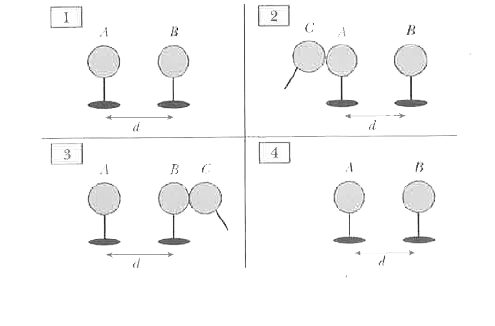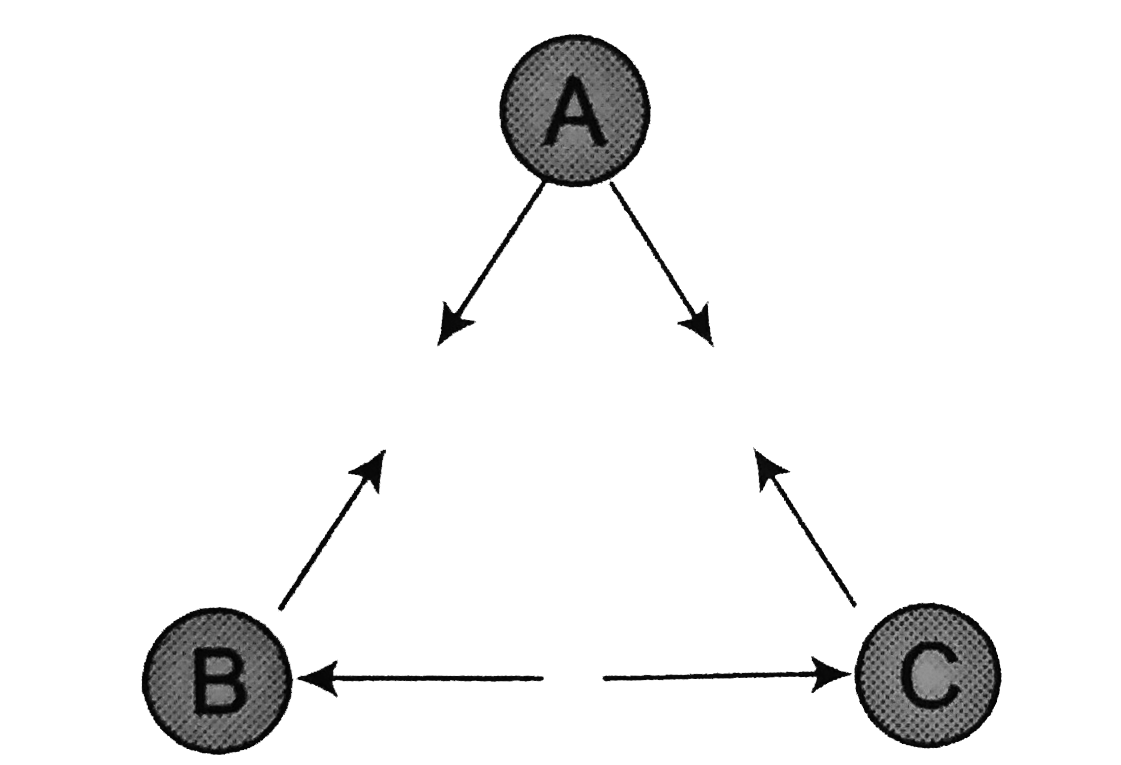Sphere
Step by step video, text & image solution for Sphere by Maths experts to help you in doubts & scoring excellent marks in Class 7 exams.
Updated on:21/07/2023Similar Questions
Consider three identical metal spheres A,B and C. Spheres A carres charge +6q carries no charge . Spheres A and B are touchd together and them separated. Sphere C is then touched to sphere A and separated from it . Finally the sphere C is touched to sphere B and separated from it . Find the final chage on the sphere C.
View SolutionTwo identical metallic sphere's A and B having charges +4Qand−10Q are kept a certain distance apart. A third identical uncharged sphere C is first placed in contact with sphere A and then with sphere B. Spheres A and B are then brought in contact and then separated. Find the charges on the spheres A and B.
View Solution
Knowledge Check
Paragraph for Questions 53 and 54: An isolated system consists of two conducting spheres A and B. Sphere A has five times the radius of sphere B. Initially, the spheres are given equal amounts of positive charge and are isolated from each other. The two spheres are then connected by a conducting wire.
Note: The potential of a sphere of radius R that carries a charge Q is V=kQ/R, if the potential at infinity is zero.
Determine the ratio of the charge on sphere A to that on sphere B,qA/qB, after the spheres are connected by the wire.A1B1/5C5D25In Frame 1, two identical conducting spheres, A and B, carry equal amounts of excess charge that have the same sign. The spheres are separated by a distance d, and sphere A exerts an electrostatic force on sphere B that has a magnitude F. A third sphere, C, Which is handled only by an insulating rod, is introduced in Frame 2. Sphere C is identical to A and B except that it initially uncharged. Sphere C is touched first to sphere A, in Frame 2, and then to sphere B, in Frame 3, and is finally removed in Frame 4.

Determine the magnitude of the electrostatic force that sphere A exerts on sphere B in Frame 4.AF2BF3C3F4D3F8Three metallic spheres A, B and C having radii are in ratio1:2:3. Charge on sphere A is 6 μC and sphere B and C are electrically neutral. If sphere A first contact with sphere B and then from C and ultimately contact from sphere B, then now charge on spheres A, B and C respectively will be-
A32μC,32μC,3μCB1μC,2μC,3μCC32μC,3μC,32μCD3μC,2μC,1μC
The charges on three dentical ebonite spheres are +2 mC, -4 mC and +2 mC respectively. Now the first sphere is brought in contact with the second sphere and then moved apart. Then, the second sphere is brought in contact with the third sphere and moved apart. Calculate the charge acquired by each sphere, provided ench sphere is kept on an insulated stand.
View SolutionTwo identical conducting spheres are charged by induction and then sepatatd by a large distance, sphere-1 has charge +Q and spher-2 has charge -Q. A third sphere is initially uncharged. If sphere-3 is touched to sphere-1 and sepatated and then touched to sphere-2 and separated what is the final charge on each of the three spheres?
View SolutionThe diagram shows the arrangement of three small uniformly charged spheres, A,B and C. The arrow indicate the direction of the electrostatic forces acting between the spheres (for example, the left arrow on sphere A indicates the electrostatic force on sphere A due to sphere B). At least two of the spheres are positively charged. Which sphere, if any, could be negatively charged?

View SolutionWhen two spheres carrying same charge but a different radii are connected by a conducting wire, the charge flows from smaller sphere to large sphere.
Smaller sphere is at high potential when equal charges are imparted to both the spheres.
View SolutionThe capacitance (C) for an isolated conducting sphere of radius (a) is given by 4πε0a. If the sphere is enclosed with an earthed concentric sphere. The ratio of the radii of the sphere being n(n−1) then the capacitance of such a sphere will be increased by a factor
View Solution